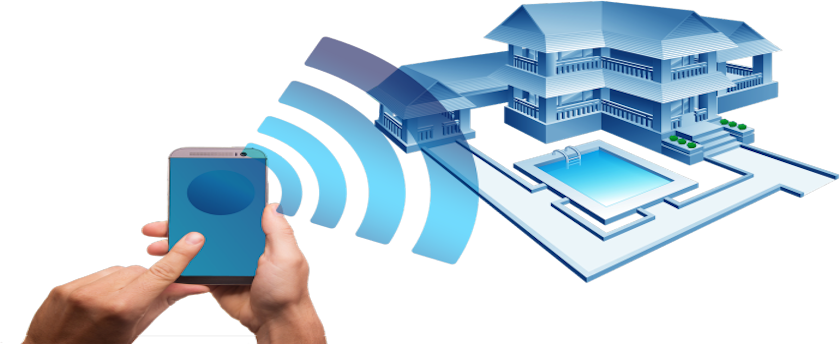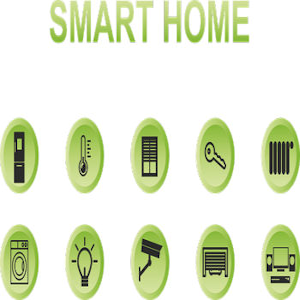
An automated home can be a very simple grouping of controls, or it can be heavily automated where any appliance that is plugged into electrical power is remotely controlled. Costs mainly include equipment, components, furniture, and custom installation.
Ongoing costs include electricity to run the control systems, maintenance costs for the control and networking systems, including troubleshooting, and eventual cost of upgrading as standards change. Increased complexity may also increase maintenance costs for networked devices.
Learning to use a complex system effectively may take significant time and training.
Control system security may be difficult and costly to maintain, especially if the control system extends beyond the home, for instance by wireless or by connection to the internet or other networks. How Green Smart Are You
Smart Home Technology
Smart home technology was developed in 1975, when a company in Scotland developed X10. X10 allows compatible products to talk to each other over the already existing electrical wires of a home. All the appliances and devices are receivers, and the means of controlling the system, such as remote controls or keypads, are transmitters. If you want to turn off a lamp in another room, the transmitter will issue a message in numerical code that includes the following:
- •An alert to the system that it's issuing a command
- •An identifying unit number for the device that should receive the command
- •A code that contains the actual command, such as "turn off.
All of this is designed to happen in less than a second, but X10 does have some limitations. Communicating over electrical lines is not always reliable because the lines get "noisy" from powering other devices. An X10 device could interpret electronic interference as a command and react, or it might not receive the command at all. While X10 devices are still around, other technologies have emerged to compete for your home networking dollar.
Instead of going through the power lines, some systems use radio waves to communicate, which is also how WiFi and cell phone signals operate. However, home automation networks don't need all the juice of a WiFi network because automation commands are short messages. The two most prominent radio networks in home automation are ZigBee and Z-Wave. Both of these technologies are mesh networks, meaning there's more than one way for the message to get to its destination. For a list of the latest and greatest we have the following: smart home technology devices and complete systems
Setting Up A Smart Home
- •Cameras will track your home's exterior even if it's pitch-black outside.
- •Plug your tabletop lamp into a dimmer instead of the wall socket, and you can brighten and dim at the push of a button.
- •A video door phone provides more than a doorbell -- you get a picture of who's at the door.
- •Motion sensors will send an alert when there's motion around your house, and they can even tell the difference between pets and burglars.
- •Door handles can open with scanned fingerprints or a four-digit code, eliminating the need to fumble for house keys. •Audio systems distribute the music from your stereo to any room with connected speakers.
- •Channel modulators take any video signal -- from a security camera to your favorite television station -- and make it viewable on every television in the house.
- •Remote controls, keypads and tabletop controllers are the means of activating the smart home applications. Devices also come with built-in web servers that allow you to access their information on-line.
This keypad will send a message to your lamp.These products are available at home improvement stores, electronics stores, from technicians or online. Before buying, check to see what technology is associated with the product. Products using the same technology should work together despite different manufacturers, but joining up an X10 and a Z-Wave product requires a bridging device.
In designing a smart home, you can do as much or as little home automation as you want. You could begin with a lighting starter kit and add on security devices later. If you want to start with a bigger system, it's a good idea to design carefully how the home will work, particularly if rewiring or renovation will be required. In addition, you'll want to place strategically the nodes of the wireless networks so that they have a good routing range.
While the networks claim that the products are easy to program and use, about 60 percent of homebuilders who have installed home automation devices hired professional help [source: Regan]. If you're looking for a technician, check if they have CEA-CompTIA certification. This certification is the result of a partnership between the Consumer Electronics Association (CEA) and the Computing Technology Industry Association (CompTIA), and it represents proficiency in installing, maintaining and troubleshooting any vendor's home networking equipment.
The cost of a smart home varies depending on how smart the home is. One builder estimates that his clients spend between $10,000 and $250,000 for sophisticated systems [source: McKay]. If you build the smart home gradually, starting with a basic lighting system, it might only be a few hundred dollars. A more sophisticated system will be tens of thousands of dollars, and elements of home theater systems raise the cost of a system about 50 percent [source: Gloede].
Smart Home Benefits
Smart homes obviously have the ability to make life easier and more convenient. Who wouldn't love being able to control lighting, entertainment and temperature from their couch? Home networking can also provide peace of mind. Whether you're at work or on vacation, the smart home will alert you to what's going on, and security systems can be built to provide an immense amount of help in an emergency. For example, not only would a resident be woken with notification of a fire alarm, the smart home would also unlock doors, dial the fire department and light the path to safety.Here are a few more examples of cool smart home tricks:
- Light a path for nighttime bathroom trips
- Instantly create mood lighting for time with that special someone
- Program your television so that your children can watch only at certain times
- Access all your favorite DVDs from any television in the home
- Have your thermostat start warming the bedroom before you get out of bed so that it's nice and toasty when you get up
- Turn on the coffee maker from bed
Smart homes also provide some energy efficiency savings. Because systems like Z-Wave and ZigBee put some devices at a reduced level of functionality, they can go to "sleep" and wake up when commands are given. Electric bills go down when lights are automatically turned off when a person leaves the room, and rooms can be heated or cooled based on who's there at any given moment. One smart homeowner boasted her heating bill was about one-third less than a same-sized normal home [source: Kassim]. Some devices can track how much energy each appliance is using and command it to use less.
Smart home technology promises tremendous benefits for an elderly person living alone. Smart homes could notify the resident when it was time to take medicine, alert the hospital if the resident fell and track how much the resident was eating. If the elderly person was a little forgetful, the smart home would perform tasks such as shutting off the water before a tub overflowed or turning off the oven if the cook had wandered away. One builder estimates that this system could cost $20,000, which is less expensive than a full-time nursing home [source: Venkatesh]. It also allows adult children who might live elsewhere to participate in the care of their aging parent. Easy-to-control automated systems would provide similar benefits to those with disabilities or a limited range of movement.
Is A Smart Home Secure?
Remember one thing if it is on a network of any kind it can be hacked. There have been examples in recent years of smart home technology being hijacked by hackers looking to take control of a home to break in by automatically opening door locks. With new cyber-security techniques smart homes are much more secure then they use to be. Our sister company has experts in the cyber-security industry who make sure the home is locked down and safe from hackers.





